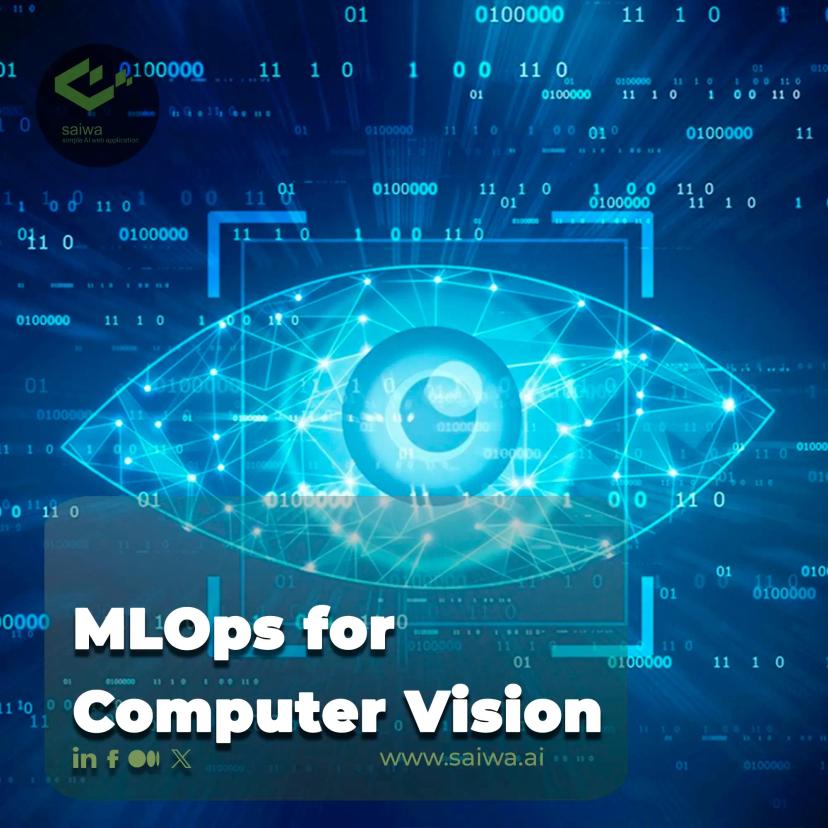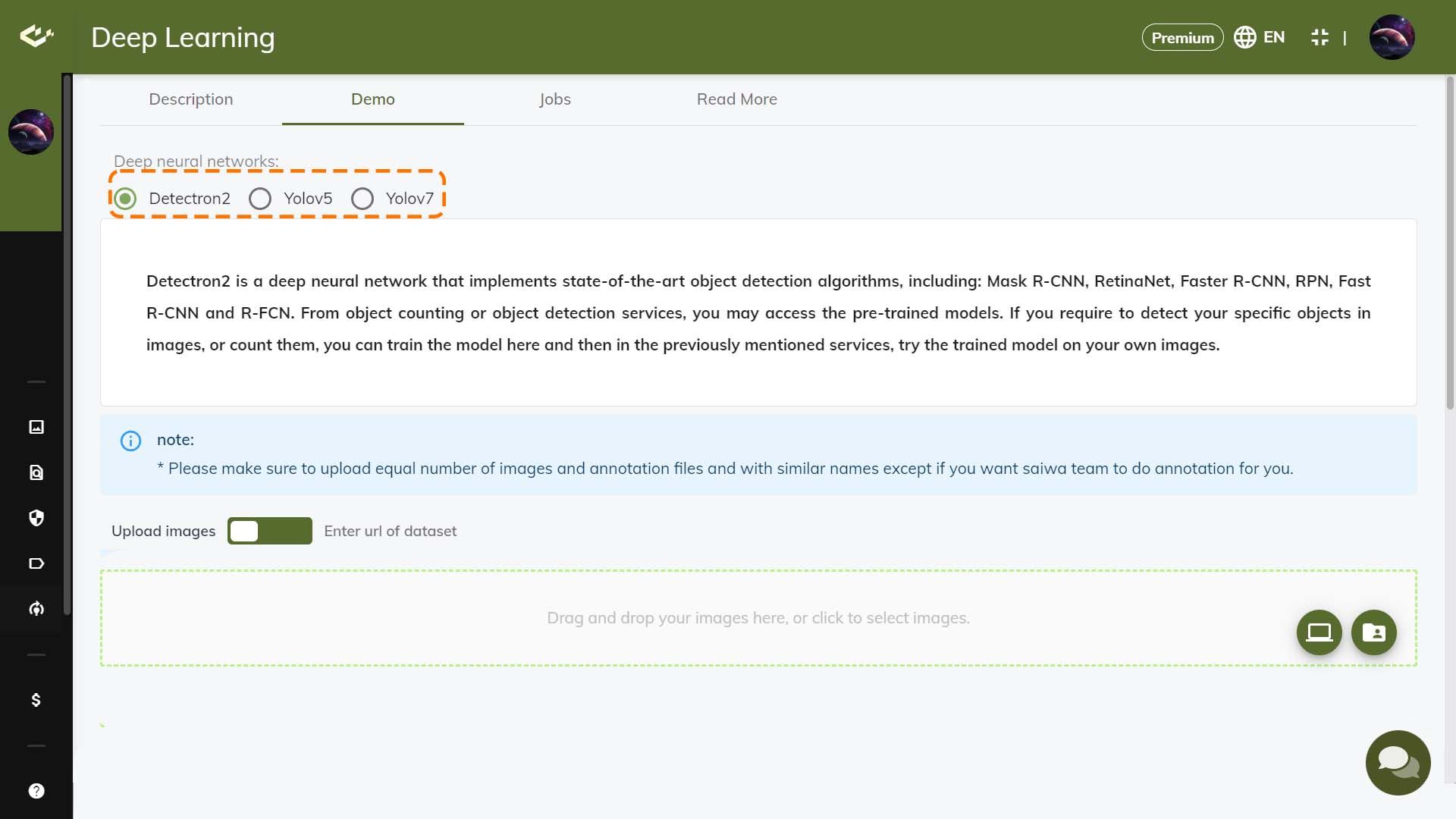
A Comprehensive Guide to MLOps for Computer Vision
In the rapidly advancing field of computer vision (CV), the integration of deep learning techniques and the availability of extensive datasets have driven significant progress. However, the development of robust and scalable CV applications extends beyond mere model development. It necessitates a systematic approach to managing the entire machine learning lifecycle. In this context, the integration of machine learning (ML) and DevOps practices, known as MLOps, becomes crucial. MLOps for computer vision facilitates the development, deployment, and monitoring of CV models, thereby ensuring their reliability, efficiency, and maintainability in production environments.
This blog offers a comprehensive examination of the various aspects of MLOps for computer vision. It explores the fundamental components of MLOps, its benefits, best practices, and prospective developments, providing a valuable resource for practitioners seeking to fully leverage the potential of CV in diverse applications.
Introduction to MLOps for Computer Vision
MLOps for computer vision facilitates the development, deployment, and monitoring of CV models, thereby ensuring their reliability, efficiency, and maintainability in production environments. The focus of MLOps for computer vision is on automating repetitive tasks, versioning components, and establishing robust workflows to create a continuous pipeline for CV projects. This article will examine the various aspects of MLOps for computer vision in depth, exploring its core components, benefits, best practices, and future trends.
Understanding Computer Vision

Computer vision is a subfield of artificial intelligence concerned with extracting meaningful information from digital images and videos. It allows machines to "see" and understand the world in a similar way humans do, enabling tasks like object detection, count objects, image classification, image segmentation, image labeling and visual scene understanding.
CV applications have a wide range of applications across various industries, including:
Self-driving cars: Recognizing objects and pedestrians on the road for safe navigation.
Medical imaging: Identifying abnormalities in X-rays and CT scans for early disease detection.
Manufacturing: Inspecting products for defects and ensuring quality control.
Retail: Automated product identification and personalized recommendations.
Security and surveillance: Real-time object detection and anomaly detection for security purposes.
What is MLOps? And Why It Matters
MLOps bridges the gap between data science and software engineering by providing a structured approach to managing the machine learning lifecycle. It encompasses the following key stages:
Data management and preprocessing: Ensuring high-quality data collection, annotation, versioning, and preparation for model training.
Model training and experimentation: Setting up reproducible environments, utilizing efficient training techniques, and employing hyperparameter tuning for optimal model performance.
Model evaluation and validation: Evaluating model performance on unseen data and ensuring generalizability.
Model deployment and monitoring: Deploying models to production environments, optimizing inference for real-time performance, and continuously monitoring model performance for drift detection.

These stages are not linear but rather iterative, requiring continuous monitoring, feedback, and refinement. MLOps provides the tools and methodologies to streamline this process, leading to several benefits:
Increased Efficiency: Automation of repetitive tasks like data preprocessing in machine learning and model training reduces development time and allows for faster iteration cycles.
Improved Reproducibility: Version control and containerization ensure models can be reliably reproduced when needed.
Enhanced Scalability: MLOps enables the deployment and management of CV models across diverse production environments.
Greater Collaboration: MLOps fosters collaboration between data scientists, engineers, and stakeholders by establishing standardized workflows and communication channels.
Reduced Costs: Streamlined development processes and efficient resource utilization lead to cost savings.
Data Management and Preprocessing
High-quality data is the cornerstone of successful CV models. The MLOps approach to data management emphasizes the following crucial aspects:
Data collection and annotation strategies
Crowdsourcing and outsourcing data labeling: This involves utilizing online platforms or external services to collect labeled datasets for object detection, image segmentation, and other tasks requiring ground truth information.
Automated data labeling techniques: Techniques like active learning and semi-supervised learning can be employed to reduce the need for manual labeling while maintaining data quality.
Data versioning and lineage tracking
Version control systems like Git are used to track changes and ensure data provenance. This allows for reverting to previous versions if necessary and understanding the origin of specific data points.
Data preprocessing and augmentation techniques
Image resizing, normalization, and augmentation: Images are resized to a standard format, normalized to have a specific pixel value range, and augmented through techniques like flipping, cropping, and color jittering to increase training data diversity and improve model robustness.
Transfer learning and fine-tuning strategies: Leveraging pre-trained models on large datasets (e.g., ImageNet) as a starting point for CV tasks allows for faster training and improved performance on smaller datasets.
Model Training and Experimentation
MLOps facilitates efficient model development through the following:
Containerization and reproducible environments
Containerization tools like Docker encapsulate model code, dependencies, and environment configurations, ensuring models can be run consistently across different systems.
Distributed and parallel training techniques
Distributing training tasks across multiple GPUs or machines significantly accelerates model training, especially for large datasets and complex models.
Hyperparameter tuning and model search strategies
Techniques like grid search, random search, and Bayesian optimization automate the process of finding optimal hyperparameter values for a chosen model architecture.
Neural architecture search (NAS) leverages machine learning algorithms to automatically search for the most suitable deep learning architecture for a specific task.
Model evaluation and validation
Evaluating model performance is crucial to assess its generalizability and suitability for deployment. This involves utilizing metrics like accuracy, precision, recall, and F1 score on unseen test data.
Techniques like k-fold cross-validation and stratified sampling ensure the evaluation process is statistically robust and avoids overfitting.
Model Deployment and Monitoring
Once a model has been trained and validated, it needs to be deployed to a production environment for real-world use. MLOps plays a vital role in this stage by:
Containerization and deployment strategies
Containerized models can be deployed on various platforms, including cloud environments, on-premise servers, or edge devices.
Orchestration tools like Kubernetes manage the deployment process, automate scaling based on demand, and ensure high availability.
Model serving and inference optimization
Optimizing model inference for low latency and efficient resource utilization is critical for real-time applications. This may involve techniques like model quantization or deploying the model on specialized hardware like GPUs or TPUs.
Model monitoring and drift detection
Continuously monitoring model performance in production is essential. This involves tracking metrics like accuracy, latency, and resource usage to identify potential performance degradation or data drift.
Alerting systems can be set up to notify stakeholders when model performance deviates significantly, allowing for timely intervention and retraining.
MLOps Tools and Frameworks
Several tools and frameworks facilitate the implementation of MLOps practices for computer vision:
MLOps platforms and toolkits
Open-source tools like Kubeflow, MLflow, and TensorFlow Extended provide a comprehensive set of functionalities for managing the ML lifecycle, including experiment tracking, model deployment, and monitoring.
Cloud-based MLOps solutions offered by major cloud providers (e.g., AWS SageMaker, GCP AI Platform, Azure Machine Learning) provide ready-to-use infrastructure and tools for deploying and managing CV models in the cloud.
Computer Vision libraries and frameworks
Deep learning frameworks like PyTorch and TensorFlow offer extensive functionalities for building, training, and deploying CV models.
Specialized computer vision libraries like OpenCV and Dlib provide pre-built modules for common image processing tasks like object detection, image segmentation, and feature extraction.
Benefits of MLOps for Computer Vision

By adopting an MLOps approach, computer vision projects can reap numerous benefits:
Improved Model Reliability and Performance: Streamlined development processes and continuous monitoring lead to more reliable models with consistent performance.
Faster Time to Market: Automation and efficient workflows accelerate the development and deployment of CV solutions.
Reduced Costs: MLOps optimizes resource allocation and reduces the need for manual intervention, leading to cost savings.
Enhanced Scalability: MLOps facilitates the deployment and management of CV models across large-scale production environments.
Improved Collaboration: Standardized workflows and version control foster collaboration between data scientists, engineers, and stakeholders.
MLOps Best Practices and Case Studies
Implementing MLOps effectively requires adherence to best practices and continuous learning from successful case studies. Here are some key considerations:
Collaboration and version control: Utilizing Git for code and data versioning guarantees traceability and facilitates collaboration.
Continuous Integration and Deployment (CI/CD): Automating the build, test, and deployment process ensures faster release cycles and reduces the risk of errors.
Model governance and regulatory compliance: Establish clear guidelines for model development, deployment, and monitoring to ensure compliance with relevant regulations (e.g., GDPR, HIPAA).
Industry-specific use cases and case studies: Studying successful MLOps implementations in specific industries provides valuable insights for similar projects.
Several real-world case studies demonstrate the effectiveness of MLOps in computer vision:
Retail industry: Companies like Amazon and Alibaba utilize MLOps to deploy and manage computer vision models for automated product identification, personalized shopping experiences, and self-checkout systems.
Manufacturing sector: Manufacturers leverage MLOps to deploy vision systems for automated defect detection on production lines, improving quality control and reducing costs.
Healthcare domain: Medical institutions are adopting MLOps to manage and monitor computer vision models used for medical image analysis, aiding in faster diagnosis and treatment decisions.
A/B Testing and MLOps for Computer Vision Model Improvement
When it comes to achieving optimal model performance, A/B testing and computer vision MLOps come together as a powerful collaboration to drive continuous improvement.
Seamless Integration
MLOps streamlines the entire CV model lifecycle, encompassing development, deployment, monitoring, and optimization. This structured framework effortlessly integrates A/B testing, a technique that randomly assigns users to experience different model versions. A/B testing within the computer vision MLOps workflow allows data scientists to make data-driven decisions about model improvements.
Data-Driven Decisions
A/B testing allows for real-world data comparison between different model versions. By analyzing these comparisons within the MLOps framework, data scientists can identify the variant that delivers the best results. Computer vision MLOps helps this process by facilitating efficient testing and data collection.
MLOps Facilitation of A/B Testing
MLOps plays a critical role in facilitating A/B testing for CV models. It ensures efficient deployment of various model versions at scale within the computer vision MLOps pipeline. Additionally, MLOps empowers the collection and analysis of relevant metrics during testing. These metrics can be tailored to the specific CV task, such as object detection accuracy, image classification precision, or even user engagement in a CV-powered recommendation system. By using computer vision MLOps, data scientists can gather richer insights from A/B testing.
Future Trends and Research Directions
The field of MLOps for computer vision is constantly evolving, with several promising trends emerging:
Federated learning and privacy-preserving computer vision
These techniques enable training models on decentralized datasets, ensuring data privacy and facilitating collaboration across institutions.
Explainable AI (XAI) and interpretable computer vision models
Research in explainable AI (XAI) aims to develop models that are not only accurate but also interpretable, allowing humans to understand the reasoning behind model predictions. This is particularly crucial in critical domains like healthcare and autonomous systems.
Reinforcement learning and self-supervised learning for computer vision
These techniques offer promising avenues for developing more robust and adaptive computer vision models, particularly for tasks requiring interaction with the environment or leveraging large unlabeled datasets.
Ethical considerations and responsible AI in computer vision
As computer vision models become more widely deployed, ethical considerations like fairness, bias detection, and explainability become paramount. MLOps practices need to integrate mechanisms to ensure the responsible development and deployment of these models.
Conclusion
MLOps provides a structured methodology for the management of the machine learning lifecycle in the context of computer vision projects. By streamlining workflows, ensuring reproducibility, and facilitating continuous monitoring, MLOps empowers organizations to construct reliable, scalable, and maintainable computer vision solutions. As the field of computer vision continues to evolve, it is becoming increasingly important for organizations to embrace MLOps best practices and to stay informed about emerging trends. This will be crucial for them to unlock the full potential of computer vision across diverse industries and applications.
